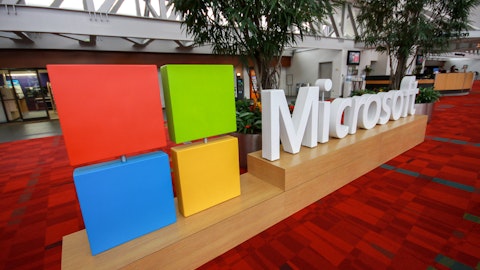State of Business
MSFT’s market capitalization was around $620 billion during the height of the dot-com bubble in 1999. As of writing, the company’s market cap was $374 billion, about 57% of AAPL’s.
Once an innovator in the consumer technology market, MSFT has been playing catch-up as demand for its PCs and legacy systems decline. Just as IBM failed to grasp MSFT’s radical shift to personal computing in the 1990s, MSFT failed to capitalize on the insatiable demand for mobile computing, which single-handedly made AAPL one of the biggest companies in the world. MSFT’s $7.2 billion “Hail Mary” acquisition of Nokia was simply too little, too late in a saturated market that is already dominated by iPhone and Android. In July, MSFT laid off 7,800 workers, nearly 7% of its workforce, after its phone business flopped. The company laid off 18,000 employees in just the year before as well.
Recognizing his company’s dependence on fledgling products like Windows and traditional PCs, MSFT CEO Satya Nadella is repositioning MSFT as a leader in the cloud computing market. And while MSFT’s cloud service has grown by an average of 100% in six consecutive quarters, it faces stiff competition from Amazon.com, Inc. (NASDAQ:AMZN), GOOGL, IBM, salesforce.com, inc. (NYSE:CRM), ORCL, SAP SE (ADR) (NYSE:SAP) and other cloud companies with narrower margins. In fact, Amazon Web Services alone has more than ten times the computing power of the next 14 largest cloud providers combined.
Shareholder-Friendly Policies
While MSFT may not be the ideal growth stock when compared to its dynamic competition, it is known for shareholder-friendly policies like dividend raises and buybacks. In 2014 MSFT raised its dividend to 31 cents per quarter, the fifth consecutive double-digit raise. Despite balance sheet issues (most notably declines in the net cash balance and the rise in the debt ratio), MSFT is expected to increase its dividend by around 2 cents in September.
The company’s last stock buyback plan occurred in 2013 amid structural and management changes. Analysts were hopeful that another buyback campaign would occur at the end of FY2017, but that was before the company’s mobile device business went belly up.
What Lies Ahead
At less than $50 a share, most analysts consider MSFT a buy. However, even bullish analysts give MSFT a 12-month price target of around $52 a share. The EPS forecast for FY2016 is $2.69, up from $2.63 in FY2015.
With MSFT effectively out of the mobile device market, Satya Nadella’s vision of a “mobile first, cloud first” company doesn’t look quite as clear as it once did. However, the CEO’s new vision statement – “To empower every person and every organization on the planet to achieve more” – is a clear change in strategy. The company’s focus on cloud will enable it to enter new product categories that intersect PCs, tablets, Internet of Things (IoT), Xbox, mobile and more, allowing it to make more money over time. This transition – which is internal as much as it is external – should keep MSFT near the top of the rankings, but not at the pinnacle. Thus, MSFT is a “hold it if you have it stock,” but investors should not expect any great returns like last year or in the dot-com era from the company going forward.
Disclosure: None





